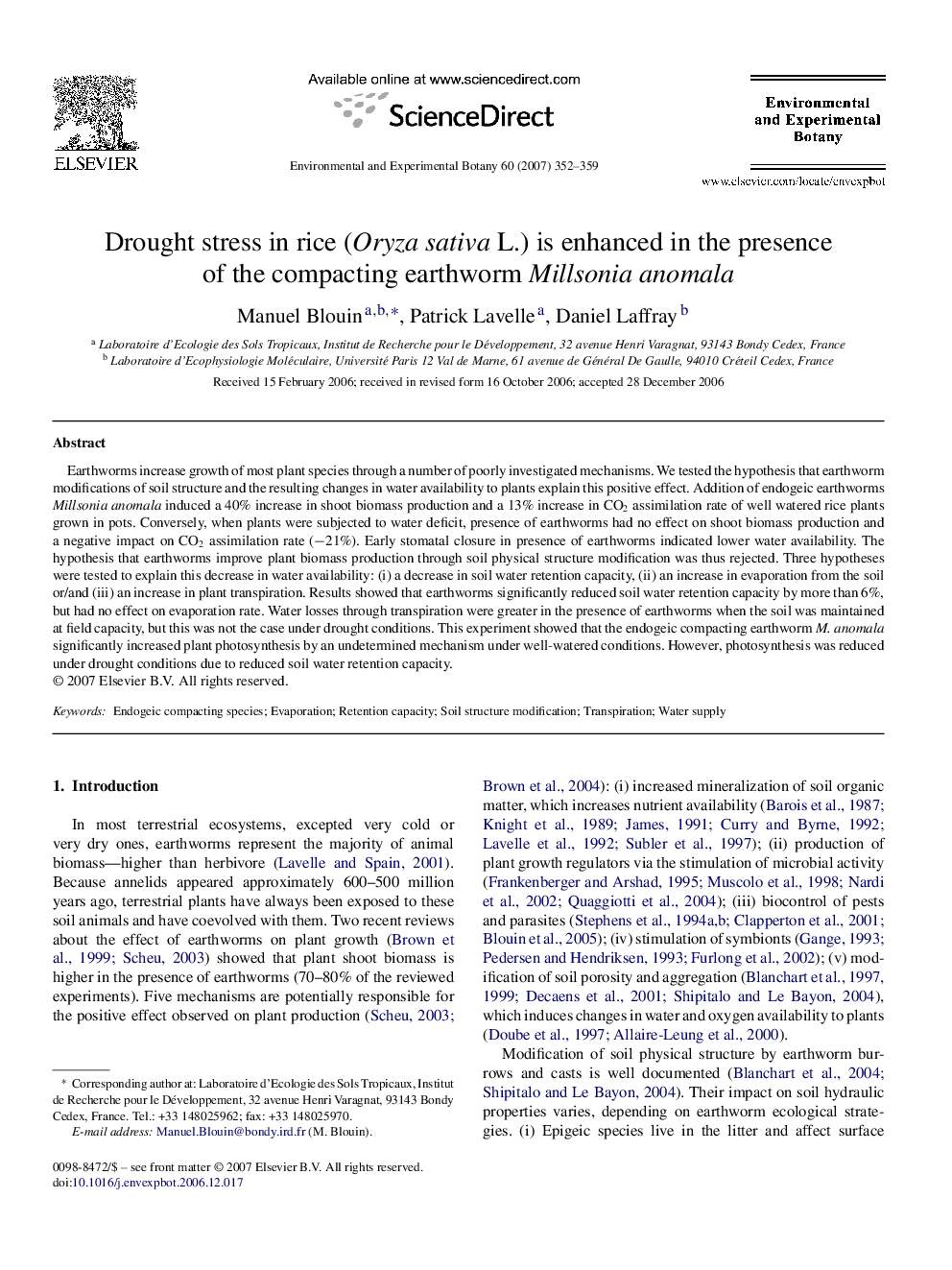| Article ID | Journal | Published Year | Pages | File Type |
|---|---|---|---|---|
| 4555464 | Environmental and Experimental Botany | 2007 | 8 Pages |
Earthworms increase growth of most plant species through a number of poorly investigated mechanisms. We tested the hypothesis that earthworm modifications of soil structure and the resulting changes in water availability to plants explain this positive effect. Addition of endogeic earthworms Millsonia anomala induced a 40% increase in shoot biomass production and a 13% increase in CO2 assimilation rate of well watered rice plants grown in pots. Conversely, when plants were subjected to water deficit, presence of earthworms had no effect on shoot biomass production and a negative impact on CO2 assimilation rate (−21%). Early stomatal closure in presence of earthworms indicated lower water availability. The hypothesis that earthworms improve plant biomass production through soil physical structure modification was thus rejected. Three hypotheses were tested to explain this decrease in water availability: (i) a decrease in soil water retention capacity, (ii) an increase in evaporation from the soil or/and (iii) an increase in plant transpiration. Results showed that earthworms significantly reduced soil water retention capacity by more than 6%, but had no effect on evaporation rate. Water losses through transpiration were greater in the presence of earthworms when the soil was maintained at field capacity, but this was not the case under drought conditions. This experiment showed that the endogeic compacting earthworm M. anomala significantly increased plant photosynthesis by an undetermined mechanism under well-watered conditions. However, photosynthesis was reduced under drought conditions due to reduced soil water retention capacity.
